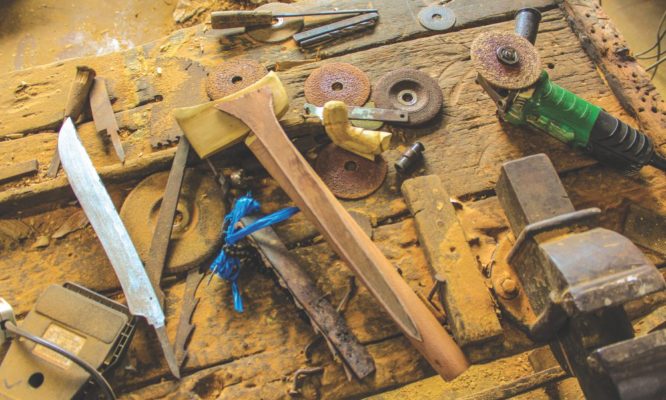For drama, action and heritage charm, the Sandakan Heritage Trail is a worthy stopover en route to Sabah’s natural attractions

Don’t be fooled by the rambling streets, old-school shophouses and the deep blue bay that fringes the coast of Sandakan.
From a village on stilts to a trading post that faced near-destruction during war, only to reemerge as a timber mecca with the world’s most millionaires per mile – the seaside town has survived a rollercoaster history worthy of movies and books.
In fact, that’s exactly what happened. Land Below the Wind, an old seafarer’s reference for the town’s position beneath the typhoon belt, became the title of an award-winning book by expatriate author Agnes Keith. Three Came Home, another book she wrote about her Prisoner of War days in an island near Sandakan, was turned into a movie.

Present-day Sandakan is better known as a gateway to the wildlife attractions along Kinabatangan River, and visitors are not known to stay in the town for long. However, this trend has been slowly changing, thanks to a group of conservation-minded locals who established the Sandakan Heritage Trail in 2003.
A self-guided walk that takes participants through 11 landmarks that reflect Sandakan’s various historic flashpoints, the trail allows them to “piece together what had happened during the city’s beginning and how the landmarks played a role to shape our community today,” says Lai King Hang, its chairman.
Strategically located in a region known for pearls, camphor, bee’s wax, sea cucumber and edible bird’s wax – not to mention the fact its sheltered bay made it a naturally fine harbour – Sandakan was eyed by the Bruneian sultanate, Dutch planters, German adventurers and the British forces at different points in history. However, the town proper began on its present site when British Resident William Pryer formally founded modern Sandakan on 21 June 1879. An imposing granite monument commemorates his contributions, which include clearing the Sandakan bay of pirates and helping to eliminate slavery.

Some of the trail’s landmarks are invaluable not only by virtue of their age, but because they contain historical artifacts with rich information on early Sandakan. One of them is Sam Sing Kung Temple, home to a bronze bell inscribed with the name of its donor – Sabah’s first Kapitan Cina. Two plaques display the names of donors to its construction, reflecting the composition of mostly Guangdong-origin Chinese migrants to Sandakan.
Many of Sandakan’s old buildings were destroyed when Allied forces bombed the city to flush out the Japanese during WWII, but even buildings that bear severe scars have rich stories. The over century-old Masjid Jamek has walls that are shot through with bullets, a testament to its day as a bomb shelter for locals during the war. What’s known as Agnes Keith’s House is in fact a faithful reconstruction of the original wooden bungalow that was damaged during the war.

Other sites are the Stairs with 100 Steps, which was used as a passage for trading; Remains of the Old Stairs, the town’s oldest cemetery, the colourful Temple of Kun Yam; Wisma Warisan, formerly a colonial government building; the Sandakan Heritage Museum; the Malaysia Fountain to mark the year Sabah joined Malaysia; and St Michael & All Angels, a hillside church noted for its stunning stained-glass windows.

Besides allowing visitors to consider Sandakan as more than just a transit town, the trail has rekindled the interest of local youth in their hometown’s past. It’s partly due to the committee’s efforts to design fun, trail-related activities, such as the recent Sandakan Heritage Trail Drone Challenge – Heritage From The Sky, which resulted in some fantastic aerial photos. Other successful programmes include a ‘selfie’ contest, Earth Hour night walks, and tie-ups with local vendors to highlight the town’s culinary attractions.
For Lai, a fourth-generation Hakka descendant, the true value of the trail lies in its potential to showcase the city’s resilience. “The wealth of records from bygone years tells us how Sandakan grew and rose from the ashes to reinvent itself. Sandakan has come a long way, and has even more to offer the future.”









